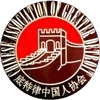Cultural heritage is the tangible representation of a society’s values, beliefs and traditions. It includes monuments, buildings, towns, works of art and other material traces from antiquity to the recent past.
What a society considers cultural heritage can vary depending on social factors such as privilege and marginalization. The defining of something as cultural heritage may even be subject to political influence.
The Rosetta Stone
One of the most famous artefacts in the world, the Rosetta Stone is emblematic of how a single piece of art can change history. Its rediscovery in 1799 set Champollion and Thomas Young on the path to deciphering Egyptian hieroglyphics, allowing for the understanding of a previously unknown language.
The stela contains an imperial priestly decree from Ptolemy V, a pharaoh of Ptolemaic descent who reigned in 196 BC. The upper text is written in Egyptian hieroglyphs, the middle in demotic Egyptian, and the lower in ancient Greek.
When the stela was unearthed by a soldier named d’Hautpoul at the fortress of Rosetta on July 19, 1799, it was immediately recognized as significant. Although French savants could copy hieroglyphic and bas relief inscriptions by hand, copying the subtle incisions of the Rosetta Stone proved difficult. Fortunately, Nicolas-Jacques Conte, an expert at the Egyptian Institute in Paris, had the ingenious idea to use the stone itself as a printing block. When inked, it produced a print with the hieroglyphics in reverse—the key to their decipherment.
Champollion’s Rosetta Stone
Various artefacts were crucial in helping Champollion decipher Egyptian hieroglyphs, but one is more significant than the others. The Rosetta Stone, a trilingual stela that presents the same text in hieroglyphics, demotic, and Greek, provided the first clues on which Champollion was able to make his breakthrough.
Working from excellent reproductions of the stela, which were published in the fifth volume of the Description de l’Egypte, Champollion isolated the demotic cartouche containing the name Ptolemy. He then transposed it into the hieratic and hieroglyphic languages.
He was then able to read the full text of the stela, which was an affirmation of the cult of the 13-year-old Ptolemy V on his coronation in 196 BC. This was the first time that a complete ancient Egyptian text had been read. This enabled Champollion to understand that alphabetic signs could also be used for foreign names, which opened the door to a complete decipherment of hieroglyphs. The breakthrough is widely considered to mark the birth of Egyptology as a scientific discipline.
The British Museum
The British Museum is one of the first and largest national museums in the world, boasting a collection of over eight million objects. Its collection includes the Rosetta Stone, the Parthenon sculptures, and Egyptian mummies.
The museum was founded by an act of parliament in 1753 and was initially based on three collections: those of Sir Hans Sloane, 1st Baronet; Robert Harley, 1st Earl of Oxford; and Sir Robert Cotton. It is currently headquartered in the Bloomsbury district of London.
The museum is home to many amazing artifacts, but it’s hard not to be captivated by the incredible history behind the building itself. As a result, the museum is one of the most visited attractions in all of Europe. Considering that it has over seventy galleries and a wide range of spectacular pieces, visitors may need multiple days to see everything. Luckily, there are tours offered for a more focused experience like the British Museum Tour with Context.
The Smithsonian
The Smithsonian is a collection of museums, research centers and a zoo. Founded with money donated by James Smithson, an English scientist who never set foot in the United States, the institution exists for “the increase and diffusion of knowledge.”
The Museum has long operated independently from political influence. While the Smithsonian is a federal agency, it does not have the same oversight and regulatory powers as traditional departments. Each administration oversees the Smithsonian differently, but the institution has a history of successfully operating outside of political interference.
The museum is also a leader in the field of education. In the past, it distributed “school sets” of rocks and minerals, sent staff to lecture in schools and created educational publications that helped people understand a variety of topics. This work continues today, with new technology and digital media opening up opportunities for a broader range of audiences to learn from the Smithsonian. It cares for everything from ethnographic objects to scientific collections to pop-culture ephemera (the ruby slippers worn by Judy Garland in the film Wizard of Oz). It is truly a national treasure.
